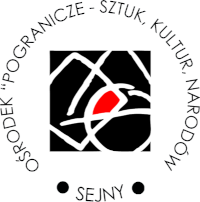Yesterday, we listened to recordings of the Black Sea, compositions by Soundwalk Collective with Patti Smith, a layered soundscape intertwining different dimensions of this experience. The sonic story of Medea was born from the depths of the water flowing at the source, a memory that only murmurs on the surface. Human geography navigates this movement, measuring it with the disturbing pulse of measuring instruments. However, from the disturbances emerges a myth along with its melody, chorus, and the primal energy of the voice. Anna Dziapshipa's seminar continued the spatial path that her film image began, but now allowed us to realize the role that sound can play in the imagination of our meeting. It is precisely the ear that naturally follows the movement of the Black Sea, it is listening that blurs the boundaries of man, opens him to the risk of direct contact with the world and focus on the Other. One of the theories that inspired the director, Guy Debord's psychogeography, a kind of creative penetration of space, can serve as a research tool, happening when we move aimlessly through cities and succumb to unrecognized forces of attraction. Based on our hearing presence, we naturally enter this movement, sound leads us to undiscovered places, creating invisible cities, roads, paths. Debord called his concept the theory of drift, and from there it's easy to immerse yourself in the waves of the Black Sea, which take us beyond the horizon, teach us to listen to polyphony. From this, a meeting is born, a bit like in Tamta Khalvaski's story, only momentary, difficult, and fragile. The boundary of such a sea becomes silence, an unnatural state when different stories die down, imagination freezes, which, after all, listens to the human and non-human world. The living sound space finds a place for every melody, sound, whisper, and what we would call noise, and its experience composes everything into a whole, gathers a common resonance. We can also think of the word in this way, in this way the verses of the text flow, the poem that we created together at the end of yesterday's seminar. Individual sentences recorded the compositions of the Black Sea, a story composed of fragments of our senses, snippets of memory. But it is only the read text that finds rhythm and sound, creates for a moment the frame of a single image with blurred boundaries due to sound. Starting in this wide field, we then approached the local context, first related to the Armenian academy and science. Nune Dilanyan told us about the methodology of "creative games" she uses, a thinking practice close to anthropological theories of play. This highly structured concept has served as a tool for meeting and solving problems together, breaking down the walls that appear on the path of science for decades. Many of the participants of our seminar participated in these games, acquiring language, theories that still serve as a foundation for their writing, academic practice. Although the framework of this method is strictly defined, within the structure itself an interesting movement appears, which transforms the functions of the participants, unleashes new perspectives and opens up thoughts. A continuation of our path related to place became yesterday's journey to two legendary monasteries - Sanahin and Haghpat, led by Arsenala Kharatyana. We drove there through the mountainous regions of Lori, passing entire industrial complexes, towns founded along the river to extract matter, open copper smelters that once worked around the clock. The clash of this Soviet architecture with 10th-century monasteries is striking, but here too history intertwines different spaces. The temples were subject to the movements of time, destroyed by earthquakes, profaned in the era of the Iron Curtain. Today, partially reconstructed, rebuilt, they are a source of Armenian identity and it's not always about a purely religious dimension. An important function of the monasteries was also their educational mission, they became places of wisdom, meeting. Both places, although differently located, different, weave the story of Armenian ornaments, which sometimes originate from the alphabet itself, khachkars and the myth recorded in them. The architecture of the monasteries comes alive when singing resounds in it, the voice turned towards the altar moves along the harsh walls, falls out of the windows or organically disappears into the dark, stone space. Sayat Nova, an aszug, a wandering musician on the border, who Dilemma newly invokes, lived and created in Haghpat for years. Raphael Roginski is looking for the language for this, and he ended our day yesterday. The Black Sea flowed in the current of history of roads, images and meetings sounding with music of different traditions, regions, forgotten minorities. We listened to Raphael's compositions, drifting through this world breathing at the shores of the water. There is no clear chronology in this story, only a path to what is not yet divided by a border, a journey to what can again write our tomorrow.
text: Piotr Szroeder
photo: Narek Dallakyan, Piotr Szroeder























